"We might have overachieved, to be honest": The making of Jak and Daxter: The Precursor Legacy
The original Naughty Dog team look back at Jak and Daxter: The Precursor Legacy as it turns 20

One day in 1999, Naughty Dog co-founder Andy Gavin walked into the studio's Santa Monica office and approached his team of QA testers with an unusual proposition: "Who wants a 48 hour, all-expenses-paid trip to Japan with plenty of jetlag, and at least one good meal?".
His chosen volunteer would be bringing back the first PS2 devkit to enter the United States, allowing Naughty Dog to finally get its hands on the next-generation PlayStation it had been eagerly anticipating for years. The machine wasn't just a peace offering from the studio's soon-to-be parent company, but the key ingredient in an ambitious new project germinating quietly in the background of its self-made Crash mania.
At last, after months of preparation, the real work on Naughty Dog's next-generation IP, a fantasy adventure that would eventually be called Jak and Daxter: The Precursor Legacy, could finally begin.
Legacy software

Jak and Daxter was the product of a studio in flux. Coming off the back of three Crash Bandicoot games, and knee deep in production on Crash Team Racing, Gavin and his fellow Naughty Dog co-founder Jason Rubin were eager to do something different. "Our relationship with Universal had gotten to the point where we couldn’t continue to make Crash Bandicoot games," Rubin tells me. "Although we loved Crash Bandicoot and we loved working with Sony, it didn't make any financial sense. Universal owned the IP, and there was a hostility there that was just brutal."
A decision was made: while Rubin would lead the primary team at Naughty Dog in getting CTR to the finish line, Gavin and a few other key programmers would break away to quietly begin work on a new game engine – one that would eventually form the foundations of Jak and Daxter. For Gavin, the vision was to build a programming language that would "shorten the interactive loop of game development" itself.
"With Crash, if you wanted to make a change in the code, it would take ten minutes to compile, five minutes to link, and then you would have to download it to the dev unit and reboot, before going through the level to see if it worked," he says. "I wanted a system where you could just modify the code on the fly instantaneously in the middle of the game, reducing that time to seconds. We ran into all sorts of issues along the way, but we got to the point where you could change your function in the code, and literally two seconds later that function would be running in the game."

"We didn't want it to be heavily science-fiction; we wanted to have a sense of legacy."
Bob Rafei
But Naughty Dog didn't just want to reduce waiting times on the development side of Jak and Daxter. The studio set its targets on a goal that games still struggle with to this day: a large, 3D open world that doesn't feature a single loading screen beyond the main menu.
Weekly digests, tales from the communities you love, and more
"The Naughty Dog way of operating was basically to list the set of things that we believed were fundamental to the product, and then to deliver on those things, and not get distracted by other niceties," explains Rubin. "With Jak and Daxter, one of the core things that we decided to do was no load times, which was incredibly difficult. The tricks we had to pull, and how many times we had to change and fix things to get that working... we might have over-achieved, to be honest!"
"The no loading thing was Jason's baby," reveals Gavin. "I think there's a long tradition at Naughty Dog of Jason wanting something better in some way, and constantly asking and pressuring for it. Jason is a great driving force because he's nagging, but in a good way, because it comes from a good place within him about making the product better. It wasn't about his own ego or wanting to win or anything, it was about making the best game we possibly could."
Now vice president of play at Facebook, Rubin's new line of work has indeed vindicated that which he fought tooth and nail for over two decades ago: "We've discovered that the faster the load time of a Facebook Instant Game, the more likely it is to succeed. To this day, those things still matter."
Double trouble
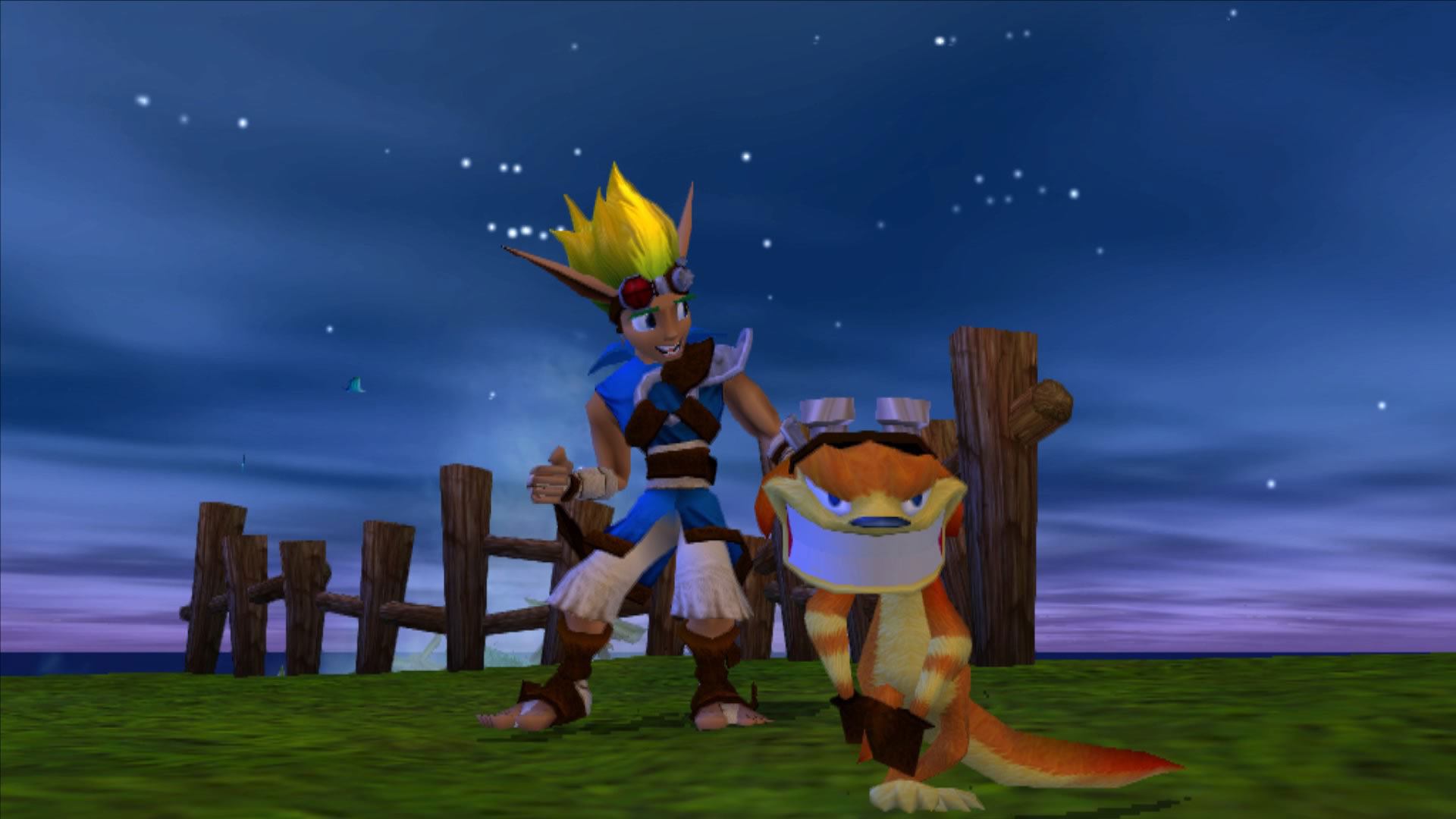

On Uncharted 2's 10th anniversary, its developers reflect on the making of a perfect sequel
With Crash Team Racing shipped in 1999, Gavin's new game engine taking shape, and that aforementioned PS2 dev kit now secured within a locked safe room at the office (to which only a few key team members, including PS5 architect Mark Cerny, had access to), Naughty Dog could enter full production on Jak and Daxter: The Precursor Legacy. First, however, the studio had to figure out what kind of story it wanted to tell.
"We were looking for something that was very organic," says art director Bob Rafei, pointing to the likes of Star Wars, Disney, and Studio Ghibli as key touchstones during the game's concepting stage. "We didn't want it to be heavily science-fiction; we wanted to have a sense of legacy. So we landed on the archetype of this little farm boy, chasing his destiny as he tried to get out of the village."
That little farm boy, of course, would be accompanied by a wisecracking sidekick called Daxter; Jak's best friend who conveniently gets turned into an Ottsel (that's a weasel-otter hybrid) after falling into a vat of Dark Eco during the game's opening cutscene. According to Rafei, it was 1998's Mulan that first gave Naughty Dog the idea of introducing the quipping deuteragonist into the mix.
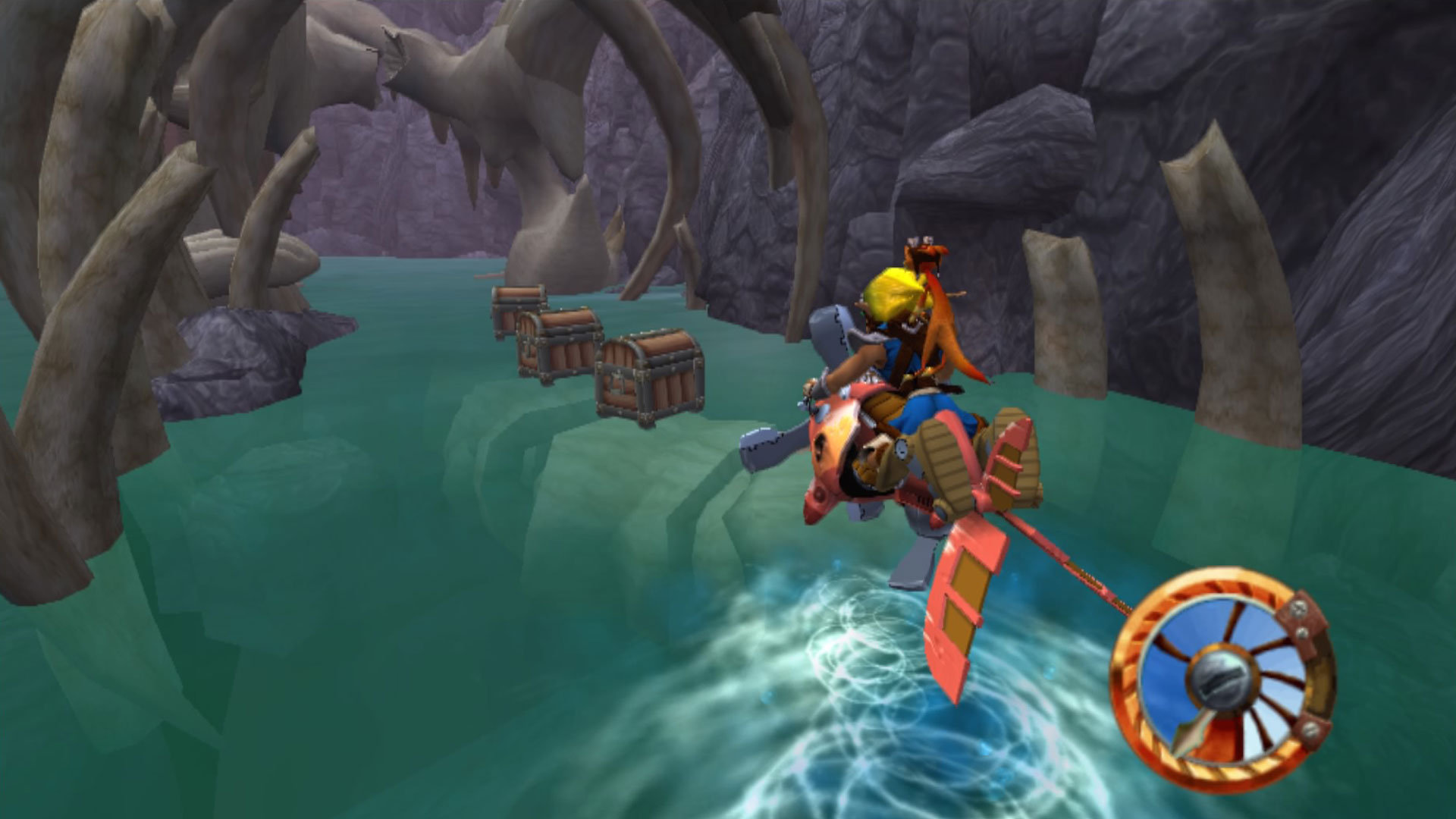
"Having Eddie Murphy's voice as Mushu, this kind of comedic, playful sidekick, was fairly new for Disney. I think it really inspired the team to do something that was more relatable to us, because we were always wisecracking and telling each other dirty jokes, so that kind of personality was very much reflected in Daxter."
Jak himself, however, wouldn't utter a word throughout the entire game, though eventually found a voice by the time of his 2003 sequel. Rubin admits that Jak's silence was another ultimatum he pushed for at Naughty Dog, motivated by the proven popularity of mute protagonists in video games at the time and, more importantly, a need to keep players involved and "fully immersed with the character".
"The feeling was that if you’re playing the character, and they tell a bad joke, you then distance yourself from that character. Gex was the perfect example of that at the time; a game that was quite accomplished that you didn’t want to play because of the distance between you and that horribly just-not-you character."
"Daxter’s pretty loquacious, for example, but if you didn’t like Daxter, that was fine. That’s Daxter, not you. Once you have a character that is unburdened from the player's connection, you can have him be annoying. And you can have him be kind of out there. And those characters are always more interesting than the straight-played alternatives."
Kennel capers
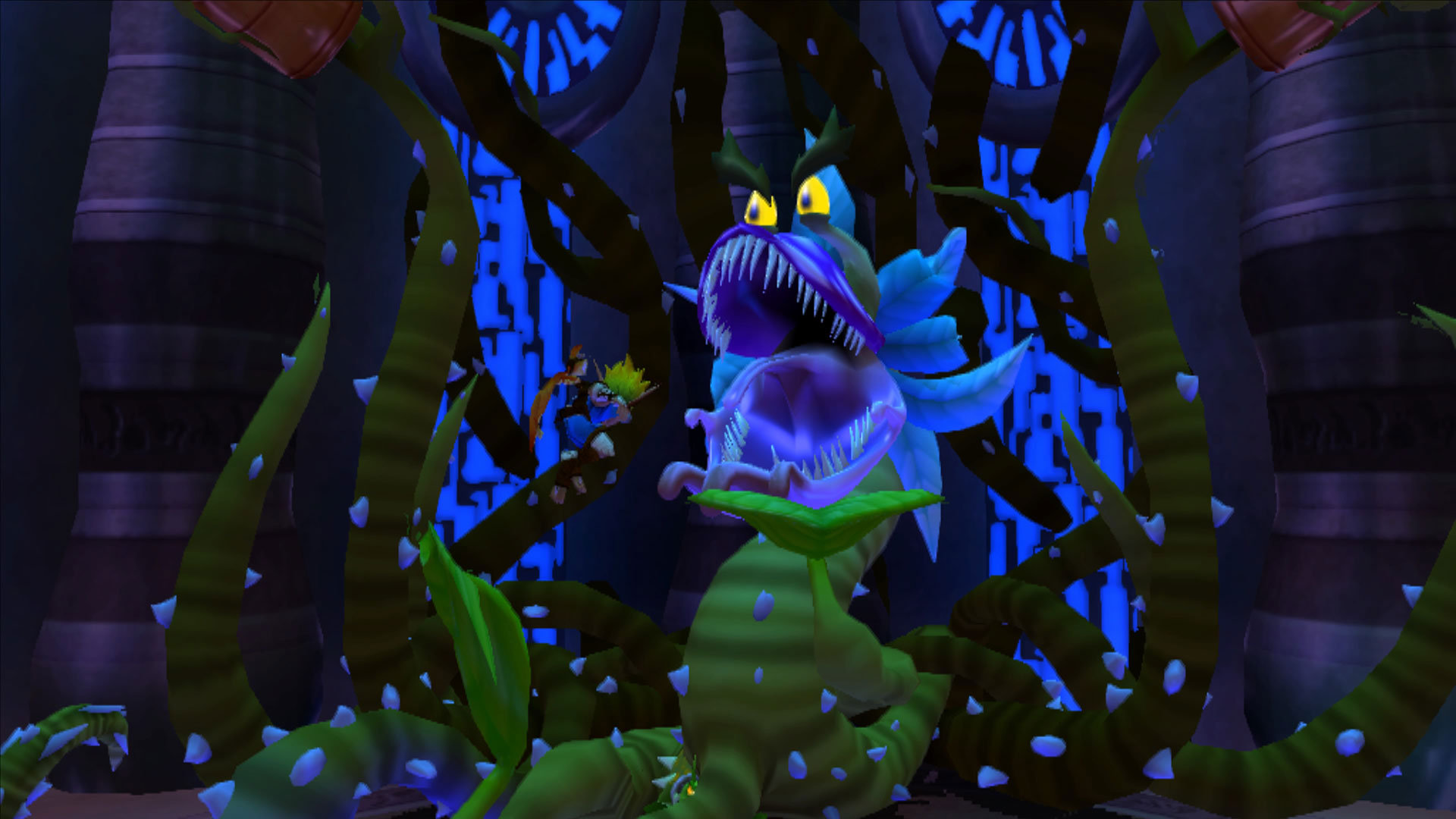
"We had a gentlemen's agreement that we weren't going to go and make a different game for Microsoft"
Andy Gavin
Rafei's swathes of gorgeous concept art gave Naughty Dog the reference materials it needed to bring the world of Jak and Daxter to life, but that transition from paper to programming was no easy process. Eric Iwasaki, then the lead technical artist at the studio, tells me that building and rigging Jak's character models proved a particular challenge for himself and fellow animator Rob Titus, as the pair sought to make use of the PlayStation 2's radically enhanced processing power.
"In addition to being our first PS2 title, Precursor Legacy would be our first project using a skeletal deformation system inside of our game engine," he tells me. "In other words, this engine would require us to more fully understand the technicalities behind how skeletal deformation systems work."
"Complicating matters, we were still learning how differently [CG creation tool] Maya handled these systems," Iwasaki continues. "We had only used the program previously to produce renderings for packaging and promotional imagery, so there was a considerable learning curve when using it to create video game assets. Somehow Rob and I needed to get the entire art staff up to speed while moving forward on our own tasks."
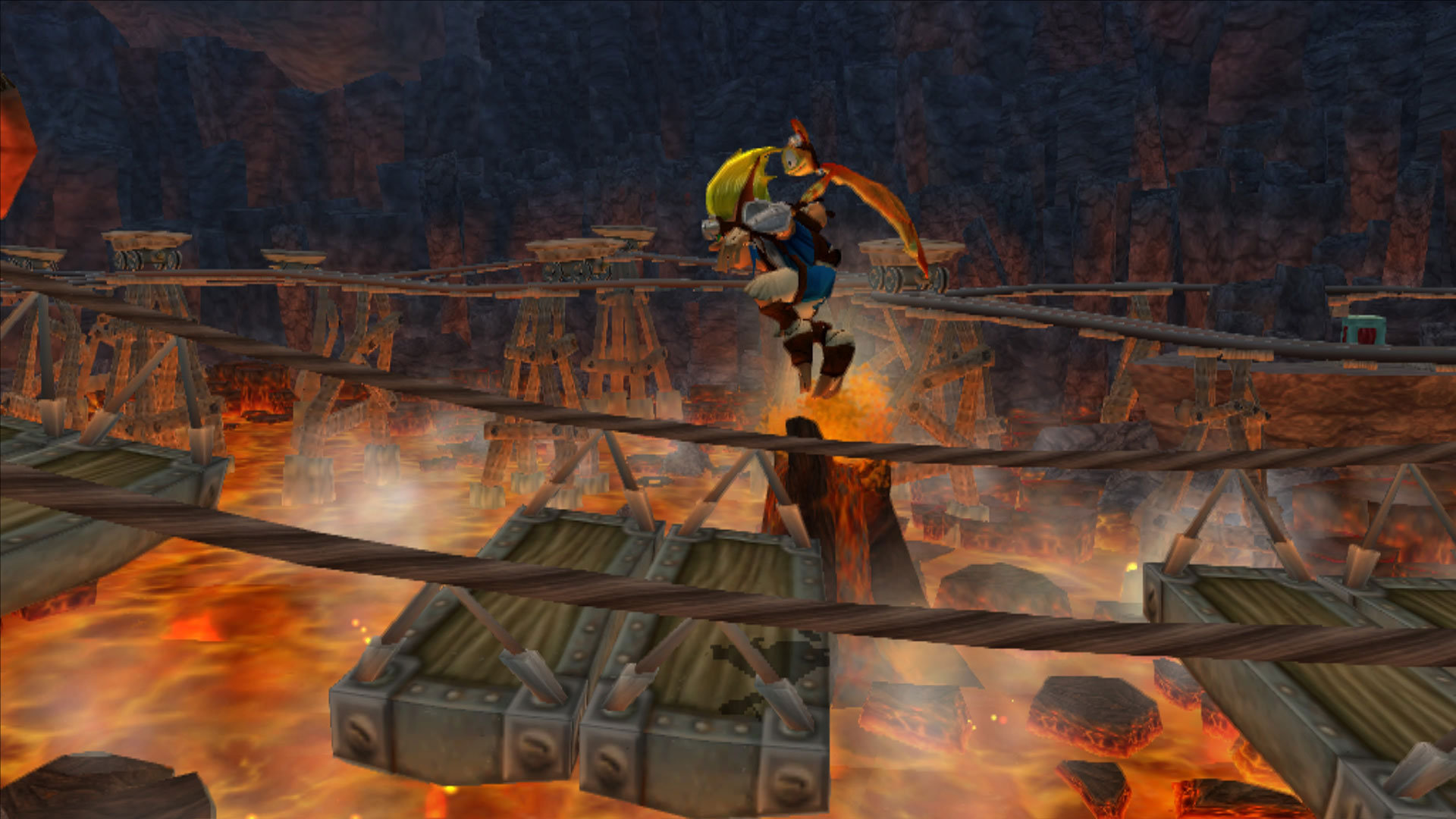
Outside of the character modelling, Naughty Dog also found itself a victim of its own ambition for Jak and Daxter's environments, which aimed to give players a palpable sense of place and progress as they followed Jak's odyssey from his home village through to the final boss.
"We wanted to maintain the level of detail we had in Crash," says Gavin, "but we also wanted big vista views, like when you stand on the Forbidden Temple in the Jungle at the beginning, and you look out over the world, and see where you've been and where you're going. That was something that we envisioned from the beginning, but then the challenge was how we could make that actually happen. Because as powerful as the PS2 was, it couldn't draw a million polygons."
The answer to that problem was a clever collaboration between Naughty Dog's art and technical departments, where Jak was able to see his next destination off in the distance, but the path between would obscure it out of view, allowing the game to trade the low-poly vista in for a more detailed version of the same environment. Rafei explains that this was all part of Naughty Dog's efforts to "not show the man behind the curtain as much as possible", but admits that those magic tricks weren't pulled off without plenty of blood, sweat, and tears.
"On top of the pressures of working with a new engine, and additional team members coming on board, it was a stressful environment," he admits, "but it was good stress. They say there's bad stress and good stress. I remember somebody once pointed out that there were 150 entities visible on screen at once, and that was a crazy escalation of what was possible on the original PlayStation. So you start to see that you've achieved something really special, and it makes the hard work all worth it."
PlayStation prospects

While Naughty Dog wouldn't be acquired by Sony until the final year of Jak and Daxter's development, the studio already had what Gavin calls a "trusted relationship" with the tech giant, which – at that point in time – was still primarily focused on the Japanese market. "We were working so tightly with Sony, and got along with them so well, that we might as well have been a first party studio. We didn't have a contractual agreement on Jak and Daxter, but they were footing some of the bills, so we had a gentlemen's agreement that we weren't going to go and make a different game for Microsoft."
Iwasaki concurs, adding that the "unusual level of trust" between Naughty Dog and Sony was a testament to the studio's already revered reputation within the industry: "Seriously, how many developers have shipped successful games on schedule for four years straight? That kind of legacy allowed us to develop an original IP without even sharing much about it until Jason felt our game was ready to be presented."
Jak and Daxter shipped for the PS2 in December 2001 to critical acclaim and strong sales figures, though its impact on the medium, the industry, and indeed Naughty Dog extends well beyond the second generation cycle. Rubin's push for perfectionism coupled with Gavin's ambition for bold technological innovation remains a key part of the studio's ethos to this day. All of its future titles and franchises would be rooted in the design hallmarks cemented by Jak and Daxter. Bruce Straley, an artist on The Precursor Legacy, went on to co-create The Last of Us with former Jak 3 intern Neil Druckmann. Without Jak and Daxter, there is no Joel and Ellie.
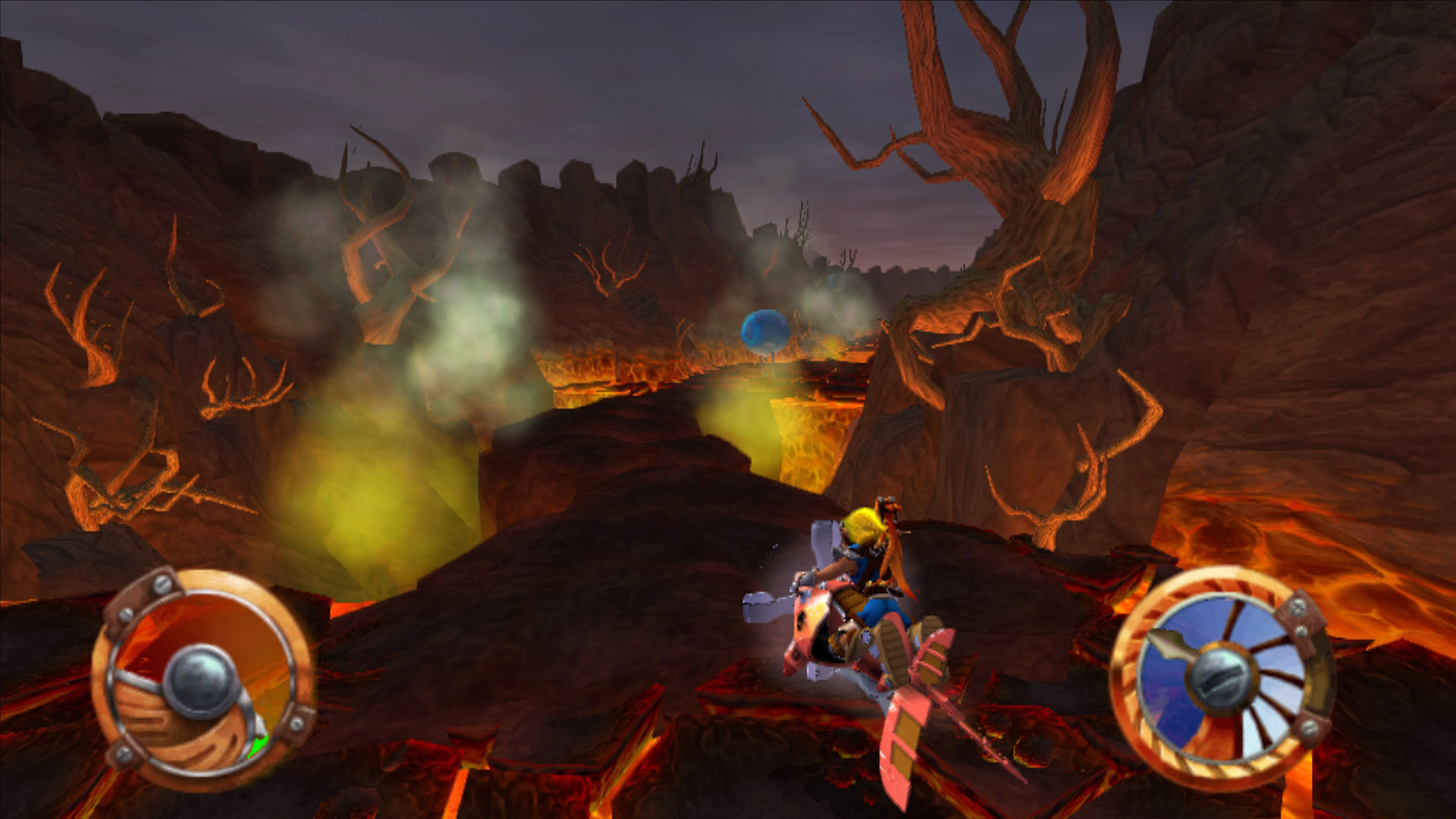
"It was about making the best game we possibly could."
Jason Rubin
Rubin offers some final reflections on his time at Naughty Dog, and what The Precursor Legacy means to him, twenty years on from release: "Jak and Daxter pushed a lot of boundaries that really were a first in the industry. It was a seamless, loadless, massive environment. It had open world design features that you'd never seen before."
"It was a game that, in many ways, I’m most proud of because it pushed the limits of things. Whereas Crash was more of a case of taking something that already exists, and making it work in a 3D world. The high quality bars we set for ourselves, and a determination to not miss them, is definitely a legacy that lasted after that. The reason that the Game of the Year awards land at Naughty Dog so often is because of those ridiculously ambitious thresholds that they just won’t let drop."
At its heart, Jak and Daxter is a story about how the legends of our past can still inspire and guide the next generation through the work they leave behind. Looking back over the history of Naughty Dog, charting the throughlines that connect The Precursor Legacy with all of the studio's subsequent masterpieces, that message now rings with far greater resonance. Jak and Daxter's legacy will forever be a part of Naughty Dog's identity as a creative force: Is it really any wonder you'll find a Precursor egg hidden away in every one of its games since?
For more, check out the best new games of 2021 to get excited about, or watch below to learn how Naughty Dog created its Rat King for The Last of Us Part 2.
I'm GamesRadar's Features Writer, which makes me responsible for gracing the internet with as many of my words as possible, including reviews, previews, interviews, and more. Lucky internet!



